- Home
- slideshows
- miscellaneous
- 13 of the scariest crimes to ever hit the world of retail
13 of the scariest crimes to ever hit the world of retail
Four young Burger Chef employees vanished while closing up the restaurant for the night in 1978, and their murders remain unsolved

In 2013, Al-Shabaab militants killed 67 people in an upscale Nairobi mall
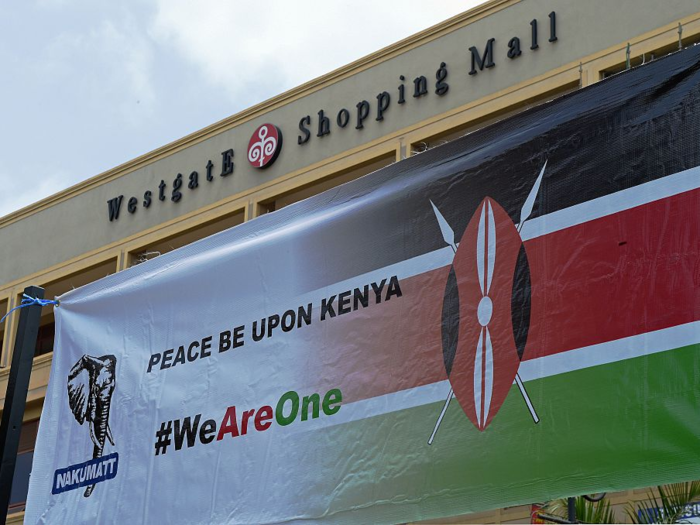
Gunfire erupted in the parking lot of Nairobi's Westgate mall on September 21, 2013, but that was just the beginning. At least four masked Al-Shabaab militants woud besiege the upscale shopping center for the next four days.
Al-Shabaab is a jihadist militant group based in East Africa. According to Al Jazeera, the terrorist organization has killed at least 300 people in Kenya over the past five years. The 2013 Nairobi attack remains one of Al-Shabaab's most high-profile attacks in the country.
Ultimately, the carnage left 67 people dead; 61 victims were civilians, while an additional six security forces lost their lives in the attack. Four of the attackers were also killed.
The exact number of gunmen remains unclear, but the alleged mastermind of the plot, Al-Shabaab leader Adan Garar, died in a 2015 drone strike, Time reported. The BBC reported that the Westgate mall reopened that same year
Five Wendy's employees died after being shot execution-style during a robbery in Queens
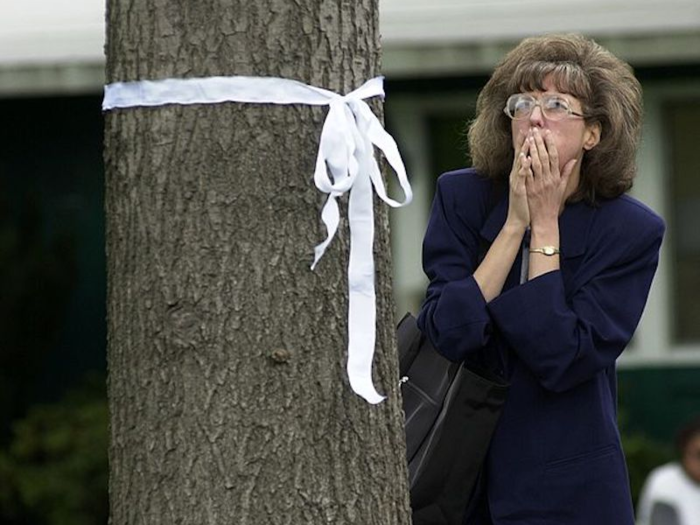
Around midnight, the manager's voice came on over the intercom at the Wendy's on Main Street in Flushing, Queens. All employees on duty were required to attend a meeting in the restaurant's back office, held just before closing on the night of May 24, 2000, the New York Times reported.
The crew — Ramon Nazario, 44, Ali Ibadat, 40, Anita Smith, 23, and Jeremy Mele, 19, along with two other workers — complied with the order. But as they filed into manager 27-year-old Jean Auguste's office, they found that he wasn't alone.
Also there were Craig Godineaux, 30, and John Taylor, 36, according to police. Taylor was a former restaurant employee who left his job "under suspicion" of theft, the Associated Press reported. Now he was back, armed with a pistol, to rob the restaurant, according to the Queens Chronicle.
The robbers proceeded to bind and gag the seven Wendy's employees with duct tape, the New York Post reported. The victims were forced into the restaurant's refrigerator, where Taylor and Godineaux shot each of them execution-style, according to a taped confession.
Auguste, Nazario, Ibadat, Smith, and Mele were killed. The two other workers survived. One of those badly injured employees, who the New York Times reported had just begun working at the Wendy's two weeks before the massacre, managed to free themselves, pull the other survivor out of the fridge, and call the police.
Taylor and Godineaux's haul from the robbery was $2,400, according to the New York Times. In the subsequent trial, the two were found guilty of murder. Taylor was sentenced to death and Godineaux, who has mental disabilities, was sentenced to life in prison. Taylor's sentence was commuted to life in prison back in 2007, according to the New York Times.
Months after the massacre, family and friends of the victims gathered together at the Queens Botanical Gardens to plant a cherry tree in honor of their loved ones, the New York Post reported.
A Lululemon employee was convicted of murdering her coworker in 2011
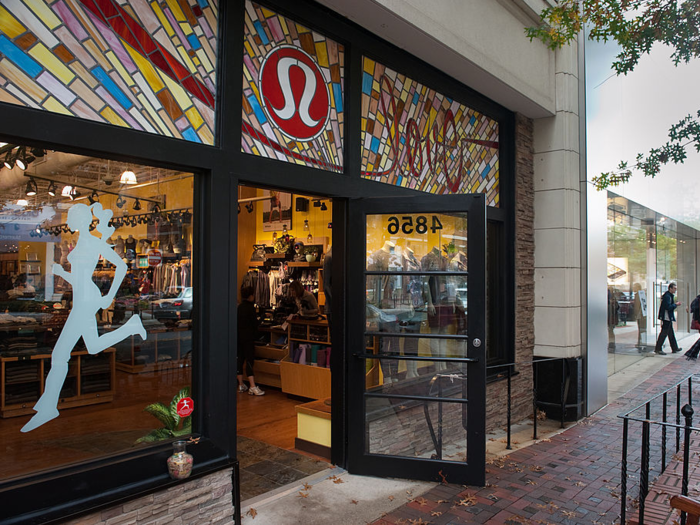
Bethesda, Maryland, was gripped by the story that Brittany Norwood wove.
The then 29-year-old Lululemon employee was working a shift with her coworker Jayna Murray, 30, on March 11, 2011 when two masked men burst into the yoga store. The robbers proceeded to brutalize the two women, murdering Murray and leaving Norwood tied up in the back of the bathroom.
But that story unraveled quickly.
As Washington Post reporter Dan Morse describes in his book "The Yoga Store Murder: The Shocking True Account of the Lululemon Athletica Killing," investigators became suspicious when the crime scene failed to match up with Norwood's explanation of what happened.
Writing for the Washington Post, Morse reported that authorities would come to charge Norwood with murdering her coworker.
The local NBC outlet reported that, shortly before the murder, Murray had discovered that Norwood was shoplifting from the store. Norwood is then said to have killed her colleague using a variety of different weapons, including a box cutter, a wrench, a hammer, a knife, and a rope, Morse writes in "The Yoga Store Murder."
Norwood was convicted of first-degree murder and sentenced to life without the possibility of parole, according to the Washington Post. Family and friends also began a foundation that started a scholarship program in Murray's honor.
A man murdered 21 people in a California McDonald's after reportedly telling his wife he was going "hunting for humans"

James Huberty opened fire in a crowded San Ysidro, California, McDonald's on July 18, 1984, killing 21 employees and diners. At the time, it was the "worst single-day mass murder by a lone gunman" in the history of the US, according to the Associated Press.
A 1984 article from the Washington Post reported, citing police sources, that the gunman told his wife that he was "going hunting humans" before he left the house to commit the mass murder.
Like many mass shooters, Huberty had a history of violence. The Washington Post reported that the 41-year-old beat his wife. According to Macleans, he also shot the family dog in the head after the German Shepherd scratched his landlord's car.
In the years running up to the 1984 mass murder, Huberty obsessively collected guns and ammunition, spewed paranoia about the US government and the Cold War, and expressed a strong interest in survivalism. The Associated Press reported that he was fired from his job as a security guard a week before the shooting.
Huberty's attack lasted for just over an hour and twenty minutes, ending when a police sniper shot and killed the gunman.
In the wake of the shooting, the McDonald's was torn down and converted into a memorial for the victims.
Five women were murdered in a Chicago area Lane Bryant clothing store in 2008
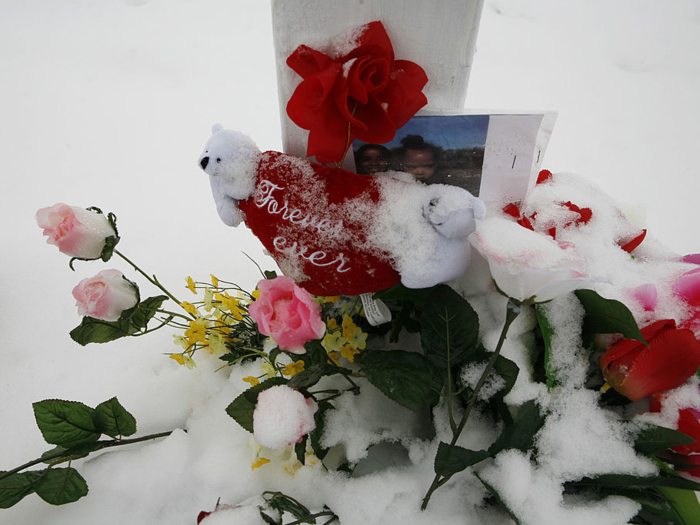
The man claimed to be a delivery driver, but he had arrived at the Lane Bryant in Tinley Park, Illinois, on the morning of February 2, 2008 with a far darker mission in mind.
According to true crime podcast Already Gone, as store manager Rhoda McFarland, 42, attempted to figure out what exactly the stranger was delivering, he pulled out a gun. He announced that he was robbing the store, which was already open and filled with a handful of shopers.
He then forced customers Connie Woolfolk, 37, Sarah Szafranski, 22, Carrie Hudek Chiuso, 33, and Jennifer Bishop, 34, to the back of the store, the Chicago Tribune reported. Also among the hostages were McFarland and a part-time Lane Bryant employee.
After binding the women with duct tape and rifling through their purses and wallets, the man began robbing the store. McFarland managed to call 911 on her Bluetooth earpiece. The man can be heard yelling on the call's audio.
Police arrived at the scene within a minute of the call, but it was already too late. After terrorizing his hostages for about 40 minutes, the Chicago Tribune reported that the man had shot and killed everyone in the store with a .40-caliber Glock, with the exception of the part-time worker. That employee survived her injuries, according to NPR.
Police request that tipsters call 708-444-5394 or email lanebryant.tipline@tinleypark.org.
A serial killer preyed on the employees of fast-food chains like Captain D's, McDonald's, and Baskin-Robbins
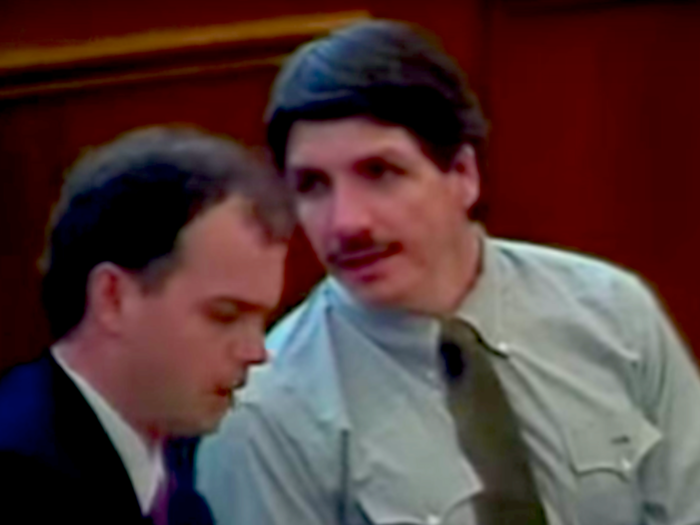
On February 15, 1997, dishwasher and convicted robber Paul Dennis Reid Jr. reportedly hurled a plate at a fellow employee in the kitchen of a Nashville-area Shoney's. The restaurant's manager promptly fired the 39-year-old aspiring country singer.
The following day, investigators said, Reid embarked on a killing spree that targeted fast-food joints and left at least seven people dead.
He started close to home, making his way into a Captain D's before the restaurant opened up for the day. Shoney's owned the seafood restaurant chain at the time, and that particular location was near Reid's former place of work.
Once inside the Captain D's, Reid was said to have robbed the restaurant and shot manager Steve Hampton, 25, and employee Sarah Jackson, 16, at point-blank range in the refrigerator, according to Nashville Public Radio.
About a month later, on March 23, 1997, Reid is said to have ambushed four McDonald's employees wrapping up a shift in the chain's Hermitage, Tennessee, location, according to the Tennessee Supreme Court's briefing on the murders.
After manager Ronald Santiago, 27, opened up the restaurant's safe, Reid shot him, 17-year-old Andrea Brown, and 23-year-old Robert Sewell execution-style, the briefing said. Reid also brutally stabbed a fourth victim after his gun malfunctioned. That employee survived the attack.
The final murders connected to Reid began in a Baskin-Robbins in Clarksville, Tennessee, on April 23, 1997. According to the Tennessee Supreme Court's summary of the case, Reid abducted two employees, 21-year-old Angela Holmes and 16-year-old Michelle Mace, from the ice cream parlor and later murdered them both in Dunbar Cave State Park.
Strangely enough, the person who ultimately brought an end to the killings was Reid's former manager at Shoney's.
The Tennessean reported that on June 25, 1997, the manager opened the door to find the dishwasher he'd fired four months earlier standing there. Reid demanded his job at Shoney's back. Then, he pulled out a gun and attempted to kidnap his ex-boss.
Reid was sentenced to death seven times over, sparking a controversy over his mental competence. The so-called "Fast Food Killer" was never executed for his crimes; he died of natural causes in 2013.
Five customers and employees were tortured and murdered during the robbery of a home audio store in Utah

An electronics store in Ogden, Utah, was the scene of a terrifying and brutal series of murders on the night of April 22, 1974.
Dale Selby Pierre, William Andrews, and another man stormed into the Hi-Fi Shop and forced employees Stanley Walker, 20, and Michelle Ansley, 18, into the store's basement.
16-year-old Byron Cortney Naisbitt then swung by the store, to thank Walker for allowing him to park his car in the store's parking lot while he ran errands in town. He was also taken hostage.
When their children failed to return home, Walker's father Orren, 43, and Naisbitt's mother Carol, 52, also visited the Hi-Fi Shop. They were forced into the basement, according to a 1974 article from the Ogden Standard-Examiner.
The victims were tied up and tortured over the course of the night. Apparently inspired by a scene from the Dirty Harry film ''Magnum Force," Pierre and Andrews killed their hostages by forcing them to drink drain cleaner, the Chicago Tribune reported.
The Associated Press reported that the Naisbitts and Walker Jr. were shot in the head. Pierre then raped Ansley before shooting her in the head as well. The robbers attempted to strangle Walker Sr., and then stabbed a ballpoint pen through his ear.
Pierre and Andrews were sentenced to death, and their executions were carried out in 1987 and 1992, respectively. Keith Roberts, who police arrested for driving the getaway car, was imprisoned and then paroled in 1987.
The other men allegedly involved in the robbery and killings were never charged, according to Gary Kinder's 1982 book on the murders "Victim: The Other Side of Murder."
Walker Sr. and Cortney Nasibitt were the only survivors of the massacre. They have both since died.
An unidentified serial killer stalked Interstate 70 in the early 1990s, killing at least six retail clerks
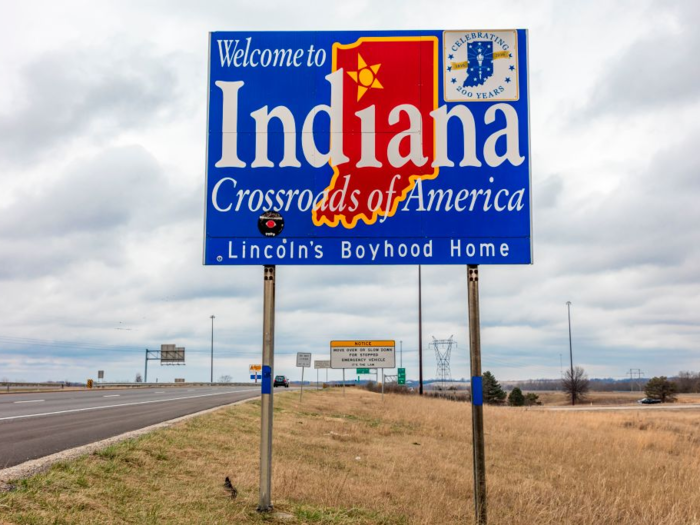
The spring of 1992 was a dangerous time to be working as a retail clerk in the string of cities that dot Interstate 70.
Back then, a still-unidentified serial murderer drifted through the Midwest, shooting and killing at least six store employees.
The I-70 killer first struck on April 8, 1992 in Indianapolis, killing Payless manager Robin Fuldauer, 26, according to Inside Hook.
He then killed two women on April 11 in Wichita, shooting employee Patricia, 23, and store owner Patricia Magers, 32, in a bridal shop called La Bride d'Elegance.
A witness, who was visiting the shop to pick up a cummerbund, ran right into the murderer shortly after the killings. After a short confrontation, Kansas.com reported that the murderer left the witness unharmed.
16 days later, Michael McCown, 40, was shot and killed while working in a ceramics store in Terre Haute, Indiana. McCown remains the only known male victim of the killer. Authorities have noted that McCown wore his hair in a ponytail, which may have confused the murder, the Journal and Courier reported.
On May 7, the killer murdered the owner of Raytown, Missouri's Store of Many Colors, 37-year-old Sarah Blessing.
The killer also may be linked to two more unsolved murders and a similiar attack in Texas that occurred between 1993 and 1994, according to Inside Hook.
But, as of today, the killer remains unidentified. Tipsters can call the hotline at 816-474-TIPS.
An ex-Domino's manager led a murderous rampage against his former employer in 1985
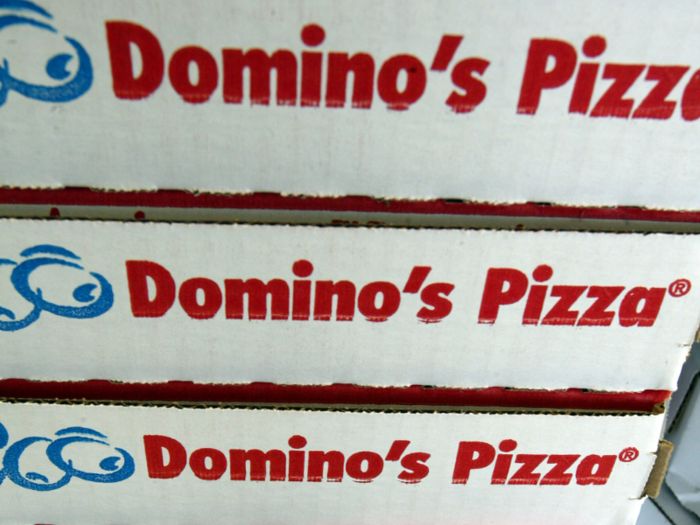
On the night of December 9, 1985, Mitchell Sims, 25, and Ruby Padgett, 20, robbed a Glendale, California, Domino's.
The restaurant was empty aside from two employees, but the pizzeria's manager warned the couple that their robbery would soon be interrupted. Domino's driver John Harrigan, 21, was out delivering a pizza to a nearby motel room. He was due back soon.
Smiling, Sims pulled off his sweater. He was wearing Harrigan's name badge and Domino's-issued t-shirt, according to a case summary filed with the US Court of Appeals Ninth Circuit.
The pizzeria employees in Glendale didn't realize that they were in the midst of a violent multi-state crime spree targeting Domino's employees. Sims himself had previously worked at a Domino's in West Columbia, South Carolina, even rising to a managerial role. But a squabble over a bonus prompted him to quit the business, according to the Post and Courier.
In November 1985, Sims took on a delivery gig at the Domino's in nearby Hanahan. In the early morning of December 4, Domino's assistant manager Gary Melke, 24, staggered into the lobby of the Hanahan Police Department.
He told police that he and his coworker Chris Zerr, also 24, had been attacked and shot by their new coworker, according to the Los Angeles Times.
Police were dispatched to the Domino's, where they found Zerr dead. Melke died in a local hospital later that night. Along with his girlfriend Padgett, Sims fled South Carolina for California.
But during the Glendale hold-up, an off-duty Domino's worker and his wife happened to visit the restaurant,the Los Angeles Times reported. The pizzeria manager pretended not to know them, raising suspicion. The worker and his wife called the police, who arrived to find the two employees alive, but in danger of strangling. Sims and Padgett had left them tied to nooses in the restaurant's frozen-food locker, according to a case summary filed with the US Court of Appeals Ninth Circuit.
Law enforcement then raided the motel room that Harrigan had been called to, where they found the driver's body in an overflowing bathtub. Sims and Padgett had bound and gagged Harrigan, then submerged him in the water until he either drowned or asphyxiated.
Sims is now on death row, while Padgett is serving life without parole.
In 1991, firefighters responding to a blaze at an Austin yogurt shop were horrified to discover the bodies of four young girls
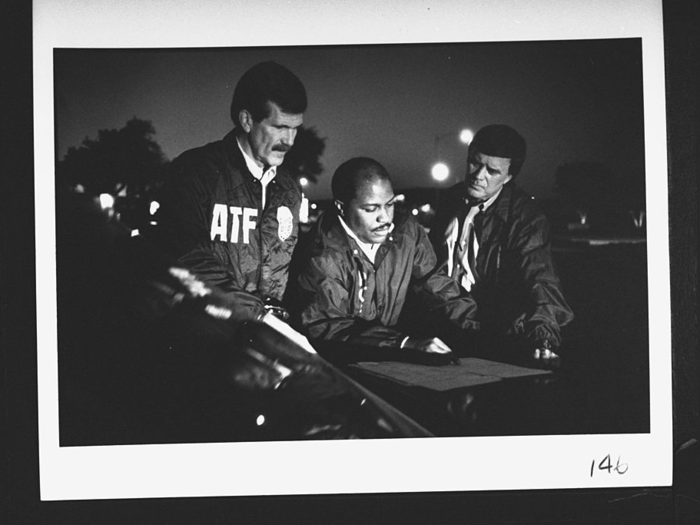
On the night of December 6, 1991, firefighters responded to a fire at the I Can't Believe It's Yogurt! shop in Austin, Texas.
The bodies of four young girls lay in the back of the store. Police identified them as 17-year-old employees Jennifer Harbison and Eliza Thomas, 13-year-old Amy Ayers, and Harbison's 15-year-old sister Sarah. They had been bound, gagged, and shot in the head.
The girls had been set to have a sleepover after closing up the yogurt shop.
Four men — Robert Springsteen, 24, Michael Scott, 25, Maurice Pierce, 24, and Forrest Wellborn, 23 — were arrested in connection to the murders. Springsteen and Scott confessed to the crime, but allegations about forced confessions swirled around the case, the Austin Chronicle reported.
Authorities dropped the charges against Wellborn and Pierce, while Scott and Springsteen both stood trial and were convicted.
In 2009, both men were freed after their convictions were overturned due to lack of evidence in the case, the New York Times reported. The only DNA evience found at the crime scene belonged to an unknown male.
Beverly Lowry's book "Who Killed These Girls?" — an encyclopedic account of the case — explains that between the fire and firefighters' efforts to put out the blaze, crucial evidence was likely destroyed.
In her book, Lowry poses one theory that the culprits may have been the two as-of-now-unidentified men who witnesses placed in the store just prior to closing time.
But the murder of the four teenaged girls remains unsolved to this day.
Tipsters with information on the murders can call in at 512-472-TIPS or 800-893-TIPS.
An unemployed man with a history of misogynistic threats shot and killed 23 people after driving his truck through the window of a Luby's Cafeteria
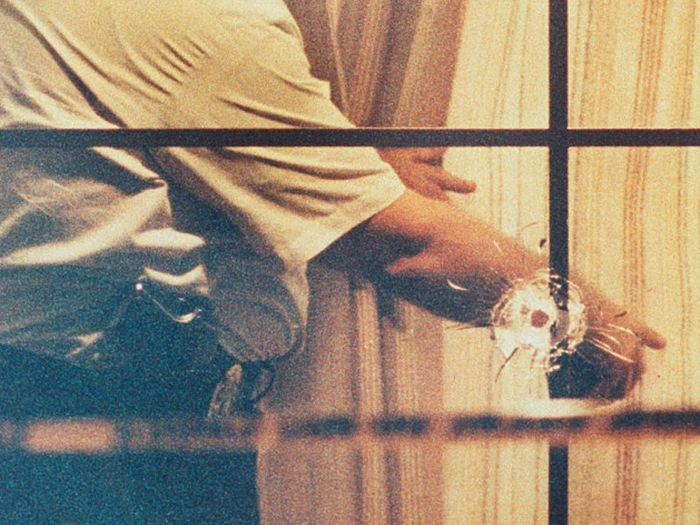
The front window of the Luby's Cafeteria shattered against the force of the Ford Ranger pickup. But the terror wasn't over for diners and employees at the restaurant, on October 16, 1991.
The driver, unemployed former merchant mariner George Hennard, stepped out of the truck and began firing a pistol.
Hennard began stalking around the store gunning down victims in the restaurant, even dragging cowering customers out from underneath tables, according to Reporting Texas.
Witnesses said that the gunman seemed to favor shooting women over men. Hennard had a history of making misogynistic threats, often calling women "vipers" and stalking neighbor, the New York Times reported. Misogyny has been widely reported to be a potential indicator of a person's capacity for mass murder.
The murderous rampage continued for 12 minutes, according to the New York Times. Hennard was shot several times by responding police, and committed suicide when he was running low on bullets.
At the time, the Luby's massacre was the worst mass shooting by a single gunman in the history of United States, according to USA Today.
The owners and employees of a Brown's Chicken restaurant were gunned down in the eatery's walk-in fridge in 1993
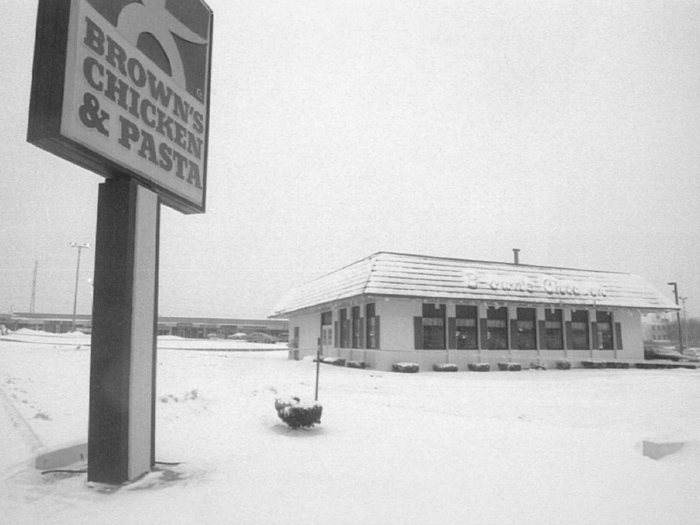
One of the robbers had chewed on a piece of chicken while holding up the Brown's Chicken & Pasta in Palatine, Illinois, on January 8, 1993. They then proceeded to force the seven people working in the eatery into a walk-in cooler and freezer at gunpoint, police said.
Hours later, that's where police found the bodies of restaurant owners 50-year-old Richard and 49-year-old Lynn Ehlenfeldt, and workers Guadalupe Maldonado, 46, Michael Castro, 16, Rico Solis, 17, Thomas Mennes, 32, and Marcus Nellse, 31, shot to death. There were no survivors, and the robbers made off with less than $2,000, the Inquirer reported.
But a forensic investigator processing the mass killing found and preserved the chicken bones, saving a clue that would help crack the case years later, according to CBS.
In March 2002, the case was still unsolved. Then a woman told police that her ex-boyfriend had bragged about the killings, the Daily Herald reported. She also implicated former Brown's employee Juan Luna, whose DNA matched the saliva found on the chicken bones.
At his subsequent 2007 trial, Luna was convicted of murder and sentenced to life in prison. Degorski was also convicted and sentenced to life in prison two years later. The building that once housed the restaurant was torn down in 2001, according to the New York Times.
Popular Right Now
Popular Keywords
Advertisement